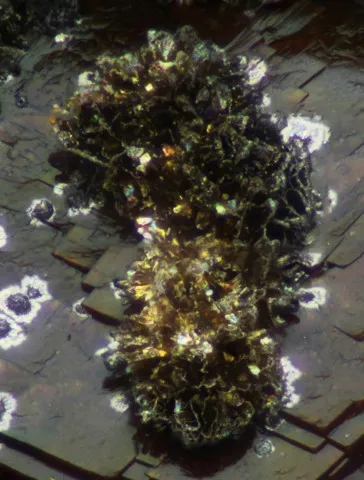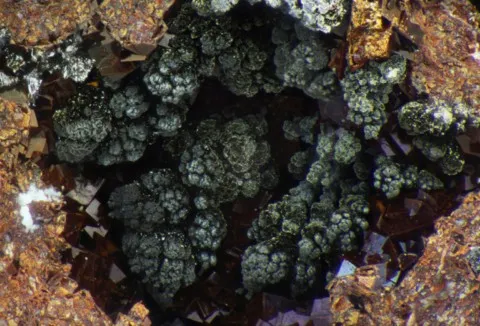RANCIEITE
Class : Oxides and hydroxides
Subclass : Hydroxides and hydrates
Crystal system : Hexagonal
Chemistry : CaMn4O9 3H2O
Rarity : Rare
Rancieite belongs to the psilomelane group, which includes manganese oxides of colloidal origin that usually evolve into better crystallized products. Like most minerals in the psilomelane group, it is a mineral of the surface oxidation zones of manganese deposits. It also forms in hydrothermal deposits at the expense of primary manganese minerals. It owes its name to its discovery location : Rancié near Vicdessos (Ariège). Rancieite is a rare mineral, frequently associated with goethite, and which essentially forms polycrystalline aggregates, stalactites and dark gray to black incrustations.
Main photo : Rancieite on ankerite from St Nicolas Mine, Steinbach, Haut-Rhin, France © Thierry Brunsperger
Rancieite in the World
Twinning
No twins known for this mineral species.
Fakes and treatments
No fakes listed for this mineral species.
Hardness : 2.5 to 3
Density : 3.20
Fracture : Undetermined
Streak : Dark brown
TP : Opaque
RI : -
Birefringence : -
Optical character : -
Pleochroism : None
Fluorescence : None
Solubility : -
Magnetism : NoneRadioactivity : None


